Control-Loop-Based Impedance Enhancement of Grid-Tied Inverters for Harmonic Suppression: Principle and Implementation
Abstract
:1. Introduction
1.1. Background and Significance
1.2. Literature Review
1.3. Formulation of the Problem of Interest for This Study
1.4. Scope and Contribution of This Paper
1.5. Organization of the Mauscript
2. Principle of Control-Loop-Based Impedance Enhancement
2.1. Reshaping Principle Based on Output Impedance Models
2.2. Deduction Principle Based on Output Impedance Models
3. Analysis of Impact on Output Impedance of Various Control
3.1. Impact on Output Impedance Using Voltage Feedback Control
3.2. Impact on Output Impedance Using Current Feedback Control
- (a).
- As indicated in (4), Zoi will be enhanced when Ki is negative. If (5) is satisfied, the two basic methods will have an identical ability to enhance output impedance. Bode plots are given in Figure 7 to verify the enhancement effectiveness of the output impedance. The output impedance will be enhanced when Ku is positive for voltage feedback control, while Ki is negative for current feedback control.
- (b).
- The capacity of the two basic methods to reshape the output impedance is identical and they are equivalent when (5) is satisfied except in one circumstance, that is, when Ku is equal to 1/GoZo, Ki will trend to be infinite.
3.3. Impedance Enhancement Control Loop Based on Basic Impedance Reshaped Methods
4. Implementation and Optimization of Control-Loop-Based Impedance Enhancement
5. Simulations and Experimental Verifications
6. Conclusions
Author Contributions
Funding
Conflicts of Interest
References
- Blaabjerg, F.; Teodorescu, T.; Liserre, M.; Timbus, A.V. Overview of control and grid synchronization for distributed power generation systems. IEEE Trans. Ind. Electron. 2006, 51, 1398–1409. [Google Scholar] [CrossRef]
- IEEE Standards Coordinating Committee. IEEE Standard for Interconnecting Distributed Resources with Electric Power Systems; IEEE Std 1547-2003; IEEE: Piscataway, NJ, USA, 2018. [Google Scholar]
- Xin, Z.; Loh, P.C.; Wang, X.; Blaabjerg, F.; Tang, Y. Highly accurate derivatives for LCL-filtered grid converter with capacitor voltage active damping. IEEE Trans. Power Electron. 2016, 31, 3612–3625. [Google Scholar] [CrossRef]
- Tang, Y.; Loh, P.C.; Wang, P.; Choo, F.H.; Gao, F. Exploring inherent damping characteristic of LCL-filters for three-phase grid-connected voltage source inverters. IEEE Trans. Power Electron. 2012, 27, 1433–1443. [Google Scholar] [CrossRef]
- Chenlei, B.; Xinbo, R.; Xuehua, W.; Weiwei, L.; Donghua, P.; Kailei, W. Step-by-step controller design for LCL-type grid-connected inverter with capacitor–current-feedback active-damping. IEEE Trans. Power Electron. 2014, 29, 1239–1253. [Google Scholar] [CrossRef]
- Wang, F.; Duarte, J.L.; Hendrix, M.A.M. Modeling and analysis of grid harmonic distortion impact of aggregated DG Inverters. IEEE Trans. Power Electron. 2011, 26, 786–797. [Google Scholar] [CrossRef]
- Guoqiao, S.; Xuancai, Z.; Jun, Z.; Dehong, X. A new feedback method for PR current control of LCL-filter-based grid-connected invertir. IEEE Trans. Ind. Electron. 2010, 57, 2033–2041. [Google Scholar] [CrossRef]
- Guoqiao, S.; Dehong, X.; Luping, C.; Xuancai, Z. An improved control strategy for grid-connected voltage source inverters with an LCL filter. IEEE Trans. Power Electron. 2008, 23, 1899–1906. [Google Scholar] [CrossRef]
- Wang, X.; Ruan, X.; Liu, S.; Tse, C.K. Full feedforward of grid voltage for grid-connected inverter with LCL filter to suppress current distortion due to grid voltage harmonics. IEEE Trans. Power Electron. 2010, 25, 3119–3127. [Google Scholar] [CrossRef]
- Li, W.; Ruan, X.; Pan, D.; Wang, X. Full-feedforward schemes of grid voltages for a three-phase LCL-type grid-connected invertir. IEEE Trans. Ind. Electron. 2013, 60, 2237–2250. [Google Scholar] [CrossRef]
- Abeyasekera, T.; Johnson, C.M.; Atkinson, D.J.; Armstrong, M. Suppression of line voltage related distortion in current controlled grid connected inverters. IEEE Trans. Power Electron. 2005, 20, 1393–1401. [Google Scholar] [CrossRef]
- Park, S.Y.; Chen, C.L.; Lai, J.S.; Moon, S.R. Admittance compensation in current loop control for a grid-tie LCL fuel cell inverter. IEEE Trans. Power Electron. 2005, 23, 1716–1723. [Google Scholar] [CrossRef]
- Yang, D.; Ruan, X.; Wu, H. Impedance shaping of the grid-connected inverter with LCL filter to improve its adaptability to the weak grid condition. IEEE Trans. Power Electron. 2014, 29, 5795–5805. [Google Scholar] [CrossRef]
- Xu, J.; Tang, T.; Xie, S. Evaluations of current control in weak grid case for grid-connected LCL-filtered invertir. IET Power Electron. 2013, 6, 227–234. [Google Scholar] [CrossRef]
- Yi, L.; Wei, X.; Chaoxu, M.; Zhengming, Z.; Hongbing, L.; Zhiyong, L. New hybrid damping strategy for grid-connected photovoltaic inverter with LCL filter. IEEE Trans. Appl. Supercond. 2014, 24. [Google Scholar] [CrossRef]
- Pappalardo, C.M.; Guida, D. Use of the Adjoint Method for Controlling the Mechanical Vibrations of Nonlinear Systems. Machines 2018, 6, 19. [Google Scholar] [CrossRef]
- Yang, Y.; Zhou, K.; Wang, H.; Blaabjerg, F.; Wang, D.; Zhang, B. Frequency adaptive selective harmonic control for grid-connected inverters. IEEE Trans. Power Electron. 2015, 30, 3912–3924. [Google Scholar] [CrossRef]
- Sun, J. Impedance-based stability criterion for grid-connected inverters. IEEE Trans. Power Electron. 2011, 26, 3075–3078. [Google Scholar] [CrossRef]



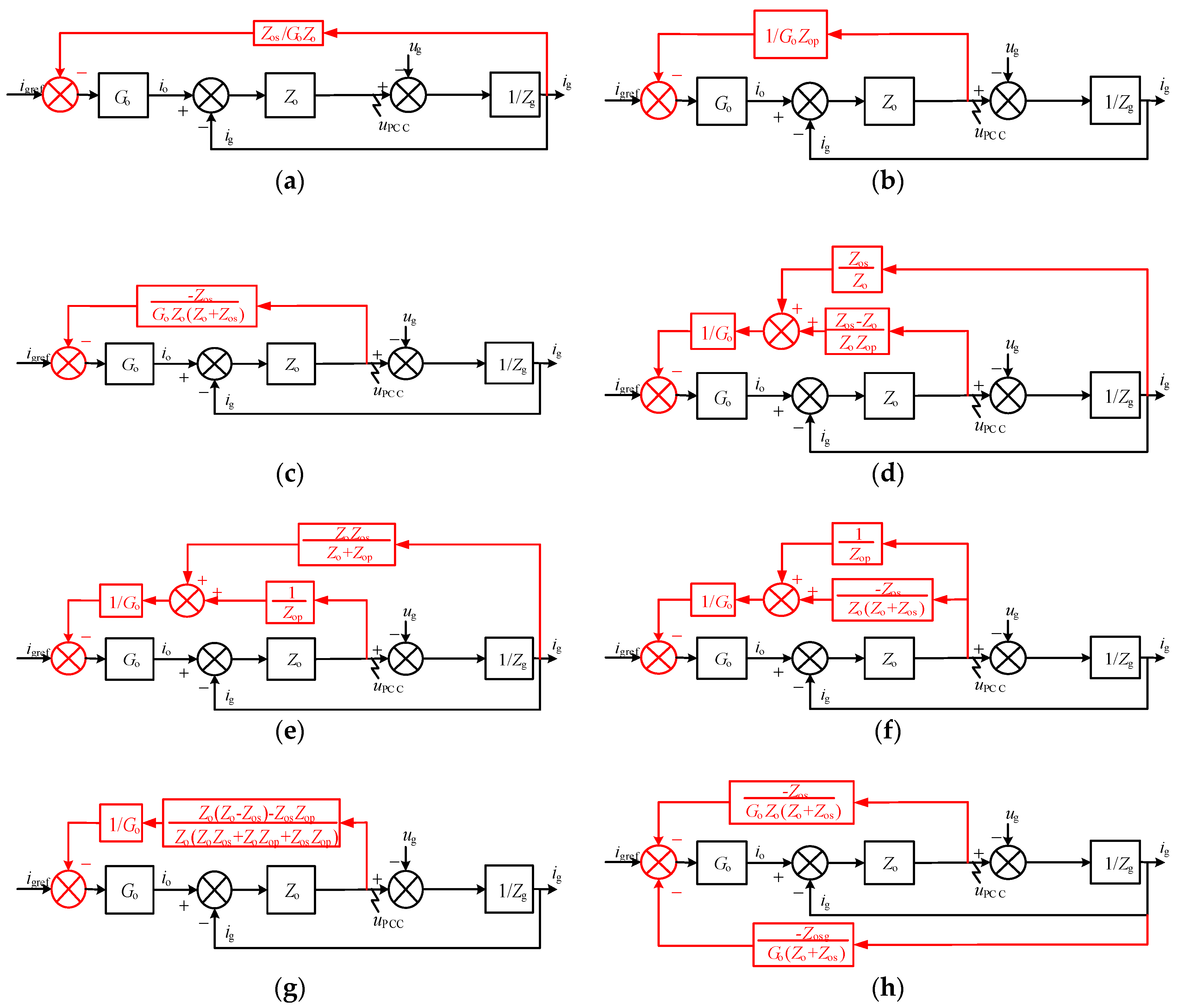



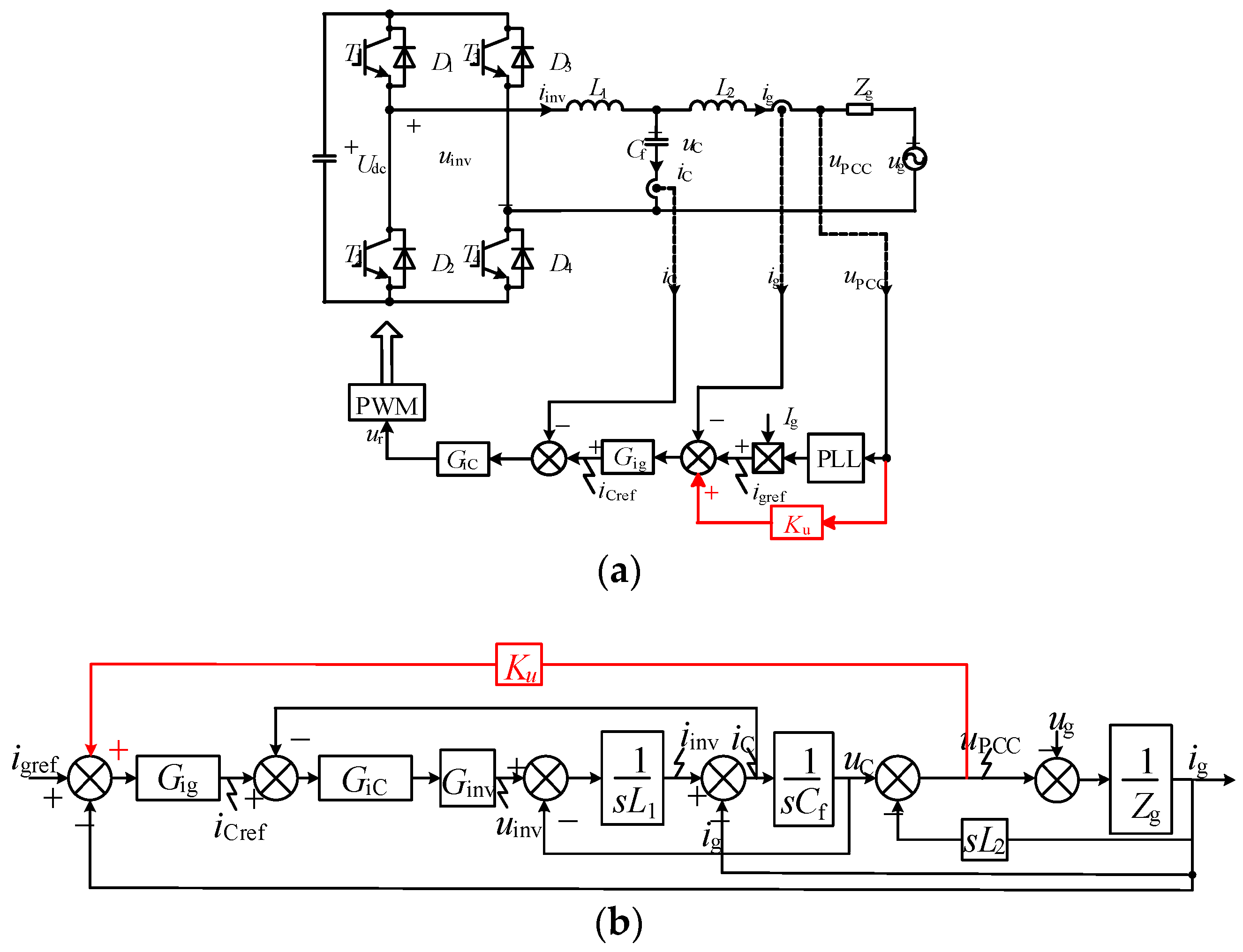




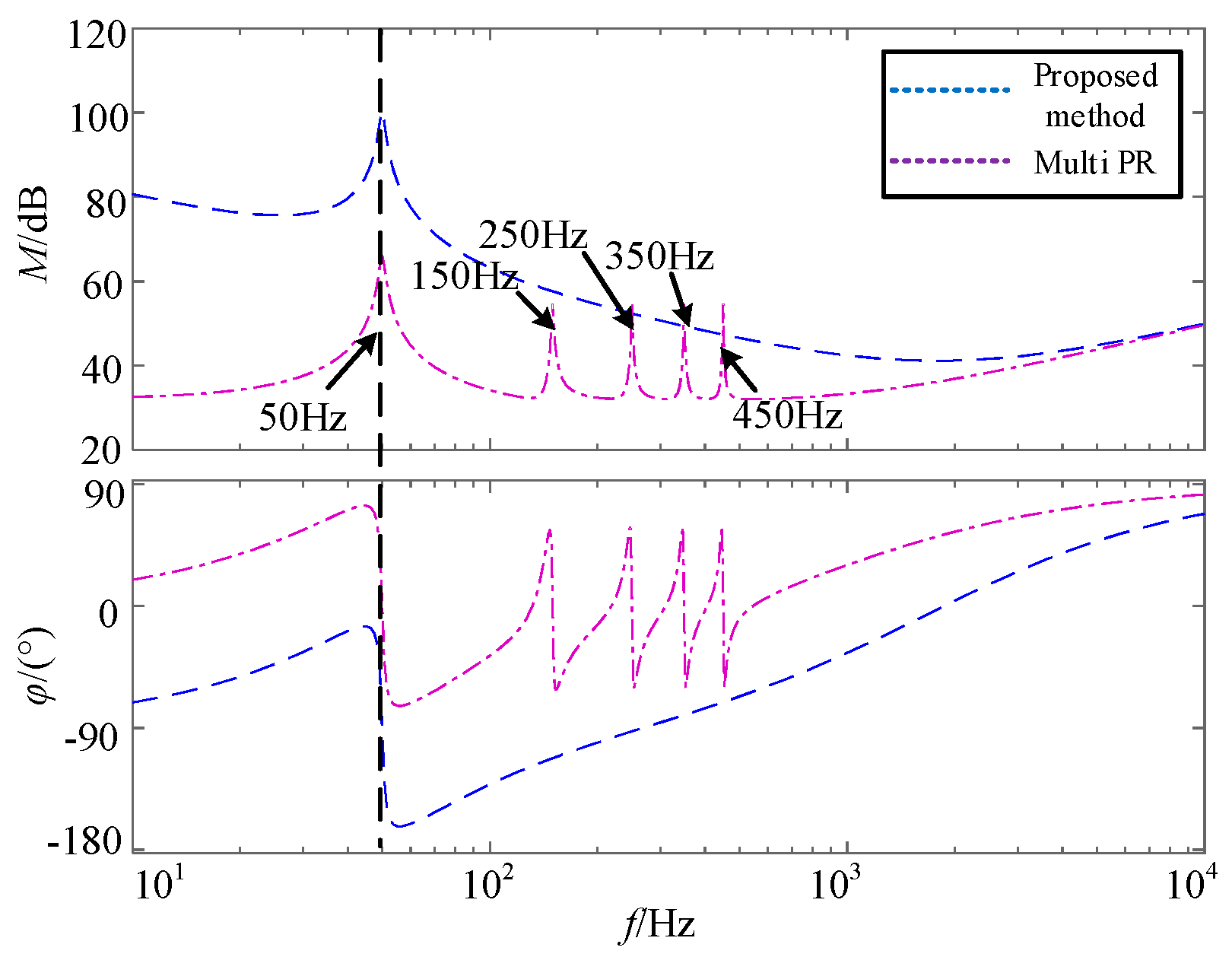

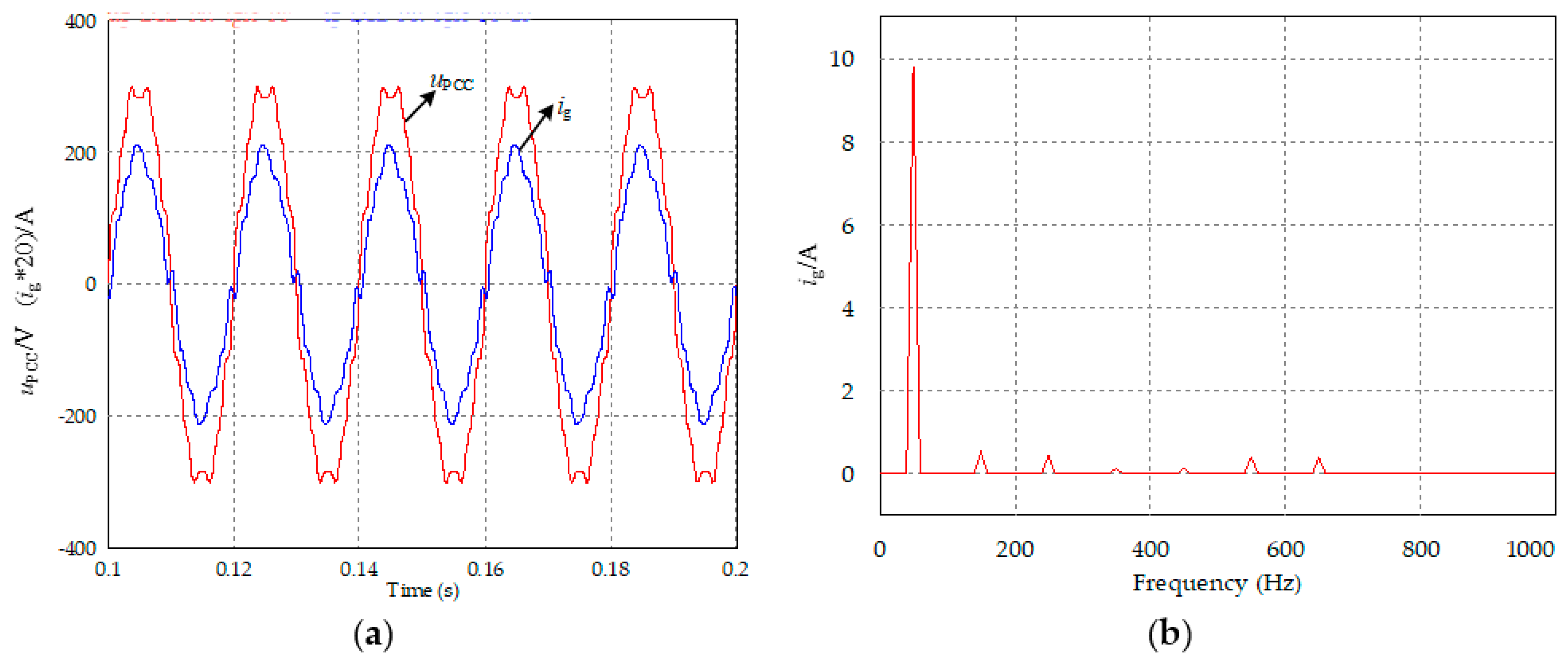
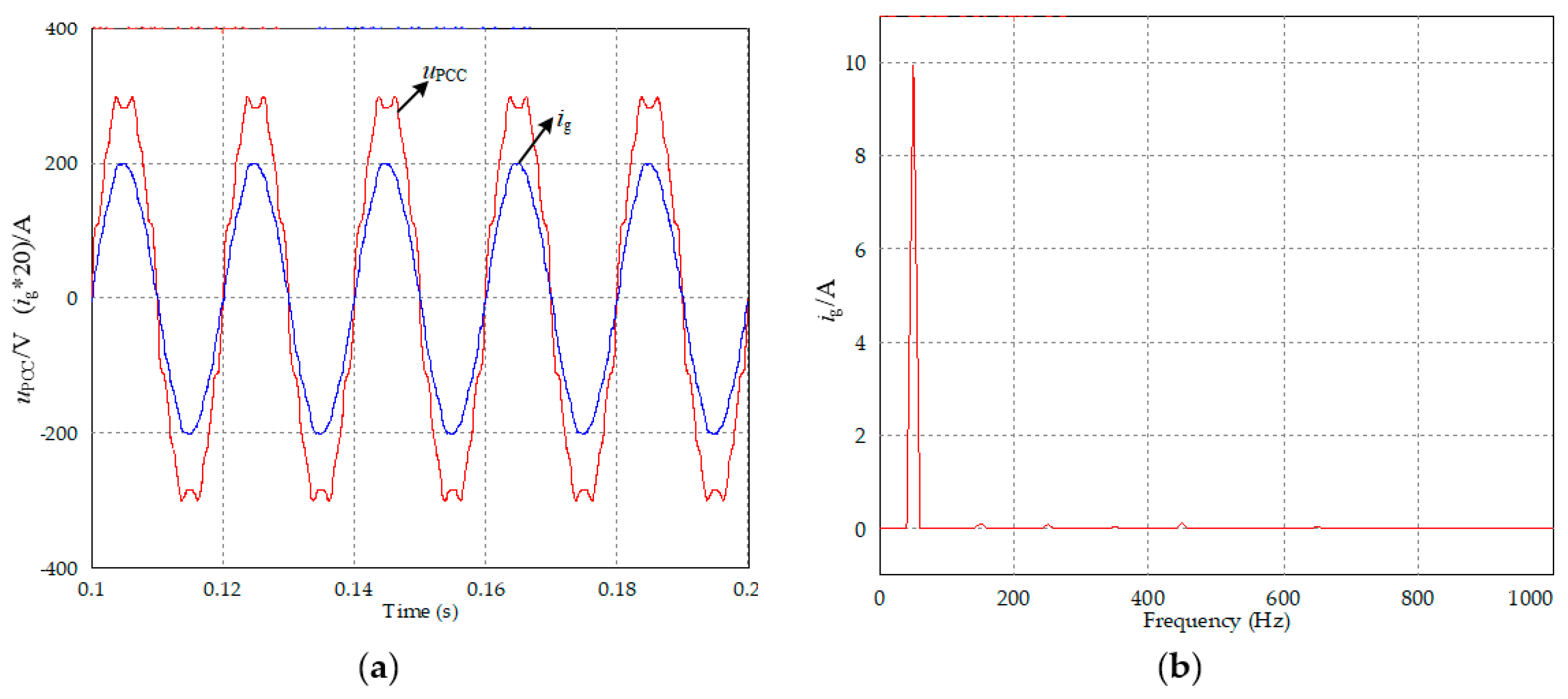

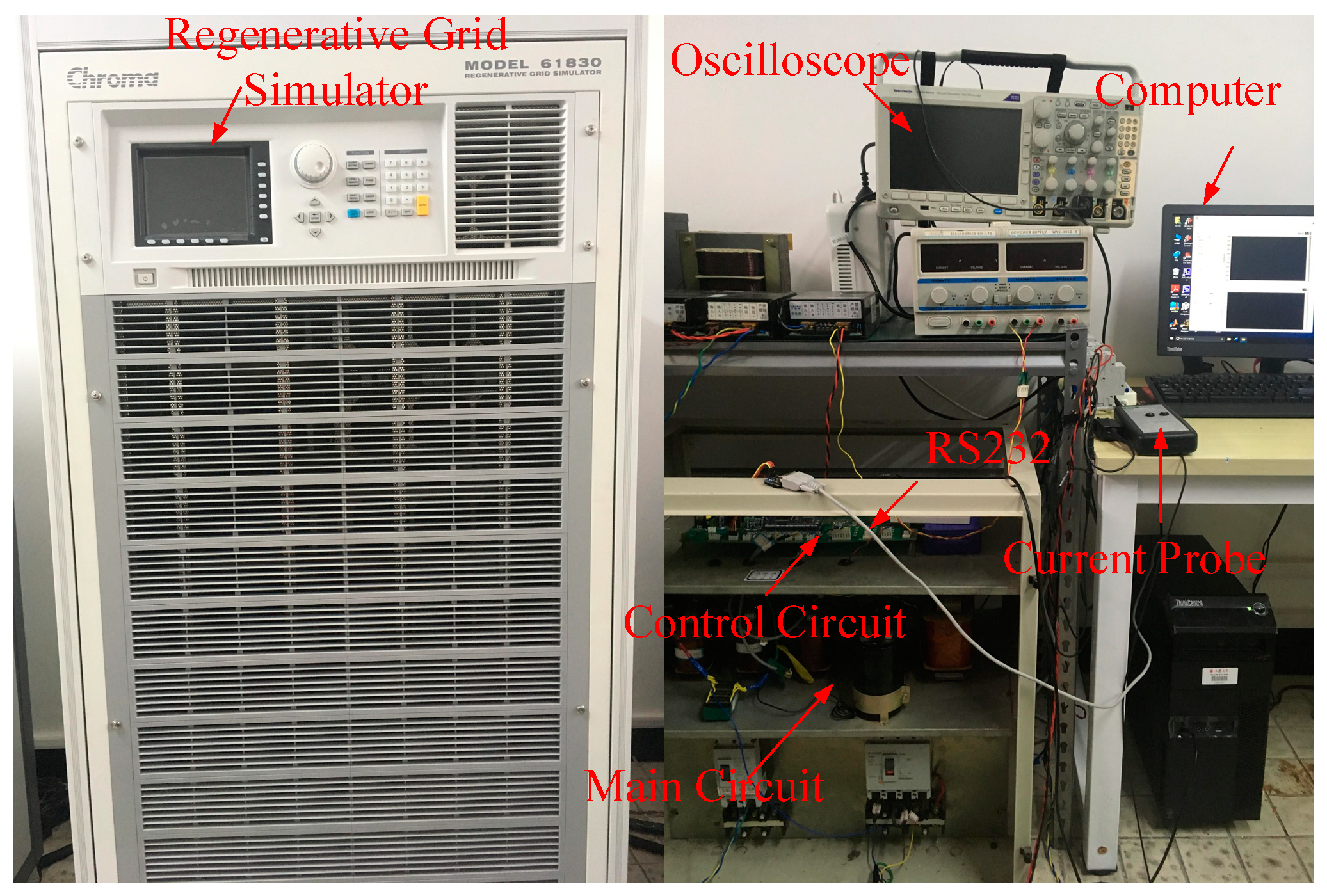



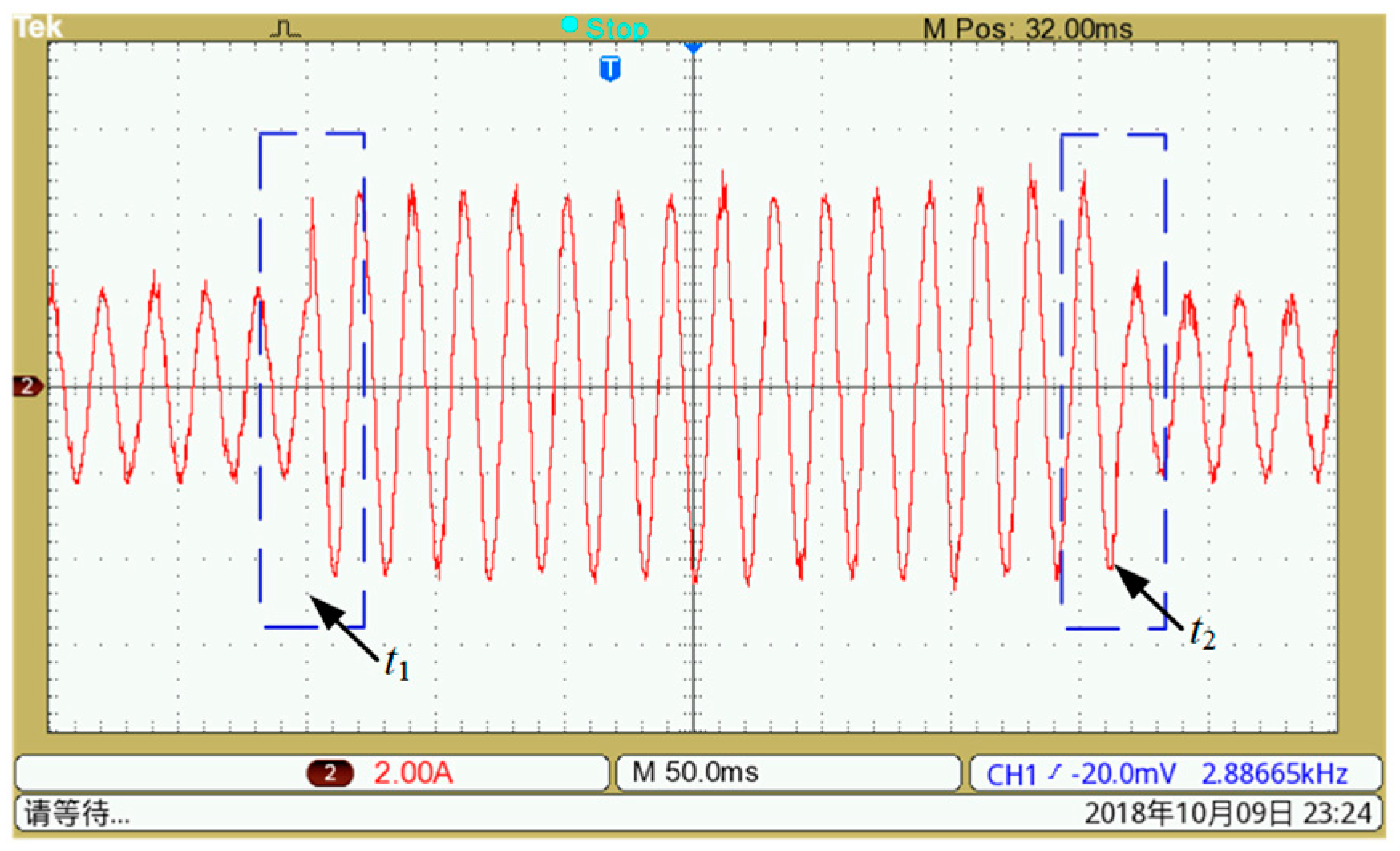
| Symbol | Quantity | Value |
|---|---|---|
| ug | Grid voltage | 220 V |
| fg | Frequency | 50 Hz |
| Udc | DC voltage | 400 V |
| L1 | Filter inductor at inverter side | 2.4 mH |
| L2 | Filter inductor at grid side | 2.4 mH |
| Zg | Grid impedance | 0.2 Ω/0.08 mH |
| Cf | Filter capacitor | 4 μF |
| fs | Switch frequency | 16 kHz |
| Gic | Capacitor current regulator | 30 |
| Ginv | Gain of the inverter | 1 |
| Kp | Proportional coefficient | 1 |
| KR | Resonance regulator coefficient | 50 |
| ωc | Band frequency | 10 rad s−1 |
| TLPF | Time constant of low pass filter | 40 μs |
| iref | Reference current | 10 A |
| Control Strategy | THD of Grid Current/% |
|---|---|
| Dual-loop control strategy | 13.17 |
| Grid voltage feedforward control strategy | 5.78 |
| Proposed control strategy | 5.75 |
© 2018 by the authors. Licensee MDPI, Basel, Switzerland. This article is an open access article distributed under the terms and conditions of the Creative Commons Attribution (CC BY) license (http://creativecommons.org/licenses/by/4.0/).
Share and Cite
Wang, F.; Zhang, L.; Guo, H.; Feng, X. Control-Loop-Based Impedance Enhancement of Grid-Tied Inverters for Harmonic Suppression: Principle and Implementation. Energies 2018, 11, 2874. https://doi.org/10.3390/en11112874
Wang F, Zhang L, Guo H, Feng X. Control-Loop-Based Impedance Enhancement of Grid-Tied Inverters for Harmonic Suppression: Principle and Implementation. Energies. 2018; 11(11):2874. https://doi.org/10.3390/en11112874
Chicago/Turabian StyleWang, Fei, Lijun Zhang, Hui Guo, and Xiayun Feng. 2018. "Control-Loop-Based Impedance Enhancement of Grid-Tied Inverters for Harmonic Suppression: Principle and Implementation" Energies 11, no. 11: 2874. https://doi.org/10.3390/en11112874





